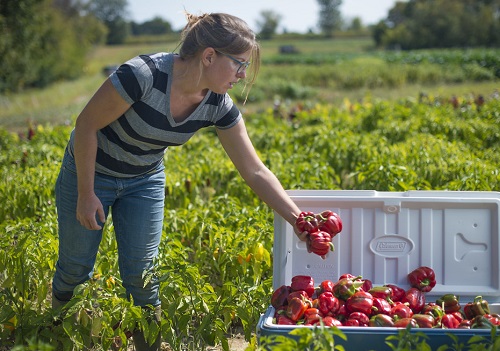With the global crisis affecting food supplies, more people are looking to support local growers. The demand for local food has skyrocketed during the pandemic, with many farmers experiencing unprecedented levels of interest. Small farms that utilize consumer-supported agriculture (CSA) programs are suddenly preparing shares for twice as many customers. The farmers in your area may be unfamiliar with so much demand and adapt quickly, depending on your region.
Now more than ever, supporting local food producers is essential. Buying local supports a more resilient food system and contributes to an equitable community. Here are some ways you can support local farmers during the coronavirus.
Sign Up
Depending on the region, there are usually several ways to purchase local produce. Start sourcing seasonal vegetables from the farmer’s market, or sign up for a CSA share to regularly receive fresh-picked food. As a bonus, products are much cheaper when you buy directly from the farmer, as you cut out the middleman — the grocery store.
Pick a few of your regular grocery items that you can replace with local produce. For example, can you buy lettuce at the farmer’s market? Not only will this support a local grower, but it probably tastes better, too!
Support
Another way to show your support is to advocate for nonprofit and community initiatives that stand for a more just food system. Familiarize yourself with organizations that advance rural economies. If you’re skilled in marketing or sales, set up a free consultation to help local growers reach their target audience. Farming is a grueling job, and many operations don’t have time to set up an online store or learn how to code.
Many farms are finding themselves forced to make sudden business transitions during this challenging time. Organizations that sold to restaurants, for instance, must completely rewrite their business strategy. Use your skillset to help local farms grow and make it through this crisis.
Advocate
We all need food, and everyone deserves access to fresh and healthy products. Talk to members of your community and see if there are any significant gaps in food distribution. In rural areas, especially, many vulnerable populations lack access to healthy items.
Older Americans are often unable to drive to farmer’s markets or lack the knowledge to sign up for an online produce share. To do your part, look into food justice initiatives that help these at-risk populations. The Gleaning Project, for example, works with local farmers to reduce food loss by collecting excess produce and redistributing it to community members at no cost.
Growing for Change
Local farmers are in a unique position right now. On the one hand, many operations struggle to find new pathways to their customers, especially if their primary source of revenue was the restaurant industry. Some crops are also experiencing extremely volatile markets, such as dairy and pork production.
On the other hand, many local farmers are seeing boosted interest in local food. In one survey, 73% of consumers claimed they would pay more for clean label products — those with as few ingredients as possible. Farmers can fill this demand.
Buying local is more important than ever, and supporting your area’s farmers has never been easier. As a consumer, your spending has the power to change the market. Investing in local growers supports an equitable food system, works toward a resilient economy and promotes sustainability for the whole population. Whether you opt for a CSA share or help distribute produce to at-risk populations, there are plenty of ways to support local farmers amid the pandemic.
Emily Folk is a freelance writer, covering conservation and sustainability. You can read her blog, Conservation Folks, for more of her work.



Good information, otherwise I wouldn’t know about it. Thanks a lot!